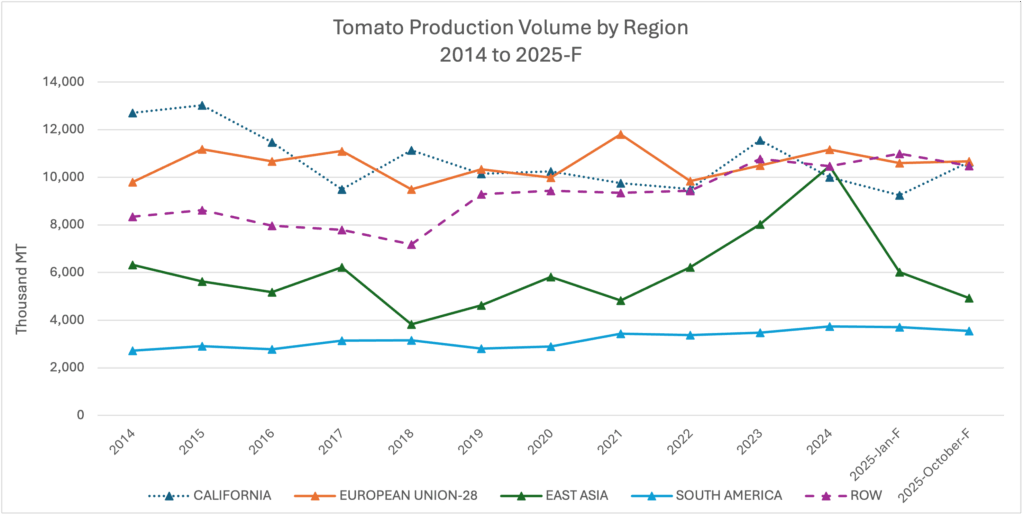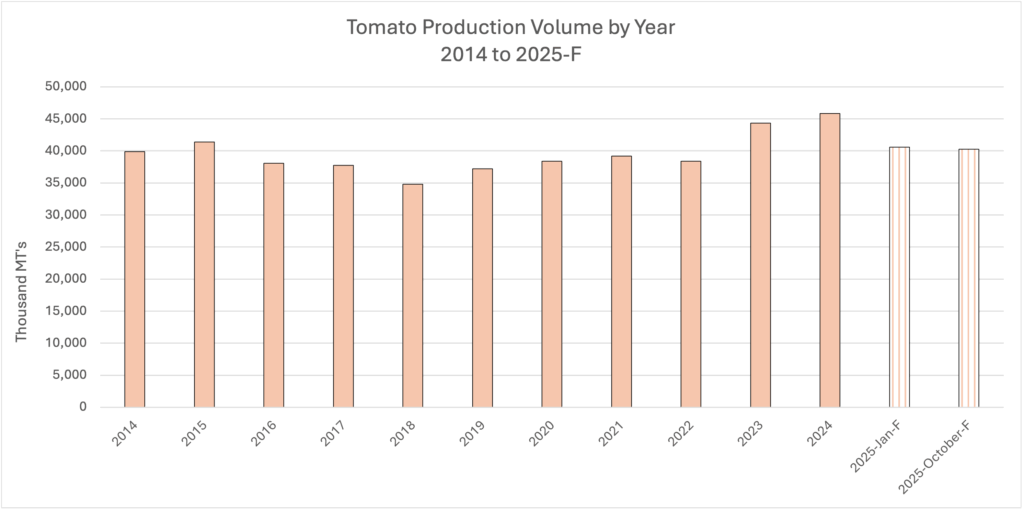Global Tomato Processing Forecast: 2025 Season Down 12%
By: Jake Sherman
The World Processing Tomato Congress (WPTC) released its 2025 forecast on October 5, estimating global processed tomato production at 40.29 million metric tons, which is a -12.1% drop from 2024’s 45.85 million tons. The decline reflects lower production levels in China and Spain and partially offset by strong gains in California and Italy.
Notable Regions with Production Gains:
California’s crop increased from 9.99 to 10.65 million tons (+6.5%), driven by excellent growing conditions and cooler summer temperatures that boosted yields to record highs of 49.9 metric tons per acre (55 short tons per acre), which surpassed the previous 2018 record by nearly 6%. Back in January, the WPTC forecasted only 9.25 million tons, but higher-than-expected yields across much of the Central Valley pushed the final total 15% above forecast.
Italy saw production rise from 5.27 to 5.70 million tons (+8.1%), largely due to stronger yields in the North, which is up roughly 3 metric tons per acre and a 7% increase in planted area. The North accounted for 53% of national production this year, compared with 46% in 2024, bringing Italy’s regional balance back to historical norms after last year’s dip.
Notable Regions with Potential Declines:
China’s output fell significantly, down from 10.45 to 4.90 million tons (–53.1%), as fewer factories operated (106 in 2024 vs. 82 in 2025) and adverse weather hit planting and harvest windows. Heavy spring rains and wind delayed planting, while summer storms in Inner Mongolia reduced yields.
Spain also posted a decline, decreasing from 3.08 to 2.40 million tons (–28.3%). Severe drought and record-low yields in Andalucía (–20%) and below-average yields in Extremadura (–10 to 20%) dragged production levels lower. Despite these shortfalls, Spain’s final figure landed right on target with WPTC’s January forecast.
Supporting Documents

Morning Star Newsletter now distributed electronically
As a reminder, Morning Star is now distributing our newsletters electronically using an email distribution vendor called Mailchimp. Your e-version will now include informative Morning Star videos and highlights. Depending on your company’s firewall, these emails may initially be directed to you spam folder.




